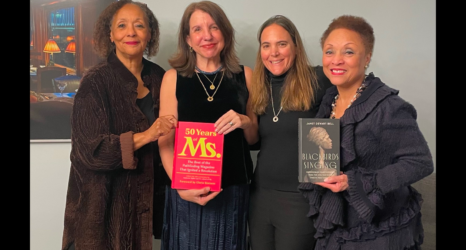“This is a biography,” Elizabeth Norton writes in the beginning of The Hidden Lives of Tudor Women. “It looks at the life of a woman, who was born in 1485 and died in 1603. She was a princess, a queen, a noblewoman, a merchant’s wife, a servant, a rebel, a Protestant and a Catholic… She changed England and was celebrated forever, and she was forgotten, a mere footnote. She was all these things and more. She was Tudor woman, and this is her story.”
As that introduction suggests, this book is part social history, part biography—tracing the lives, loves, obstacles, triumphs and struggles of the Tudor Everywoman from prophetesses to entrepreneurs to queens, nuns and wives. The book is divided into seven different sections, paralleling William Shakepeare’s Seven Ages of Man from his play, As You Like It—infant, schoolboy, lover, soldier, justice of the peace, ageing retiree and infirm elder. Norton makes it clear that the Seven Ages of Man “could never apply in quite the same way, when women were largely denied any official, public role,” but she still uses this structure to trace “the ruling Tudor dynasty [that] was bookended by two princesses named Elizabeth Tudor—the one born in 1492, whose brief years passed into obscurity, and the other who dominated her era and brought the dynasty to its close with her death in old age, in 1603.”
Without romanticizing the era, Norton’s biography of the Tudor Everywoman weaves together the lives of well-known figures like Anne Boleyn to lesser-known women like Joan Bocher, a radical reformist who distributed English translations of the New Testament to religious officials. One of the most impressive aspects of this book is how the lives of seamstresses, royal children’s “rockers” and nuns are described with as much care as the more wealthy and notorious women better known to history. This books illuminates how difficult it was for all women to craft fulfilling lives for themselves during this period, and how inspiring all the women featured in this book are, no matter their social class or profession.
Norton also chronicles the ways in which women went around the patriarchal structures of Tudor society and civic institutions to acquire power in various ways. She tells the story of Elizabeth Barton, known publicly as the Holy Maid of Kent, who became a nun and prophetess who challenged the Archbishop of Canterbury and King Henry VIII, particularly during the time when King Henry was seeking to divorce his first wife, Catherine of Aragon. Claiming to see visions from God, Barton was incredibly popular among the lower classes, particularly because she was consulted by religious and secular authorities alike. Though she was burned to death after it was discovered that she made up all of her visions, she managed to ingratiate herself into the highest reaches of England’s political sphere.
Norton also introduces us to Katherine Fenkyll, widow of Sir John Fenkyll, a successful businessman who passed away while she was still relatively young. She was left extremely wealthy and in possession of her home, his lands outside of London and a significant portion of his estate, and she was named one of the executors of his estate in Sir John’s will. Rather than excluding herself from running his trading company, she took full of control of it and became one of the wealthiest and most successful businesswomen in England during the Tudor dynasty. Though she suffered from suits leveled at her by men who sought to take her money and property, and wasn’t able to join the Drapers’ Company because of her gender, she nonetheless was successful in a trade that typically excluded women from participating in it.
Women during the Tudor era were not allowed to vote, often died in childbirth, were the property of their husbands, were punished more heavily under the law than men and were restricted from participating in most of civic life. Yet even while they were confronted with these setbacks, the women in this book refused to be stymied by their patriarchal and oppressive society. This book is a captivating, inspiring and informative summer read not only for fans of Tudor England, but also those who are facing insurmountable obstacles themselves—and are looking to craft fulfilling lives for themselves.
As an archaeologist and historian specializing in the Tudor period and the queens of England, Norton’s knowledge of this period is unparalleled. After graduating with a double first class degree in Archaeology and Anthropology with a focus on the medieval period at the University of Cambridge, she attended Oxford University for her masters degree in European Archaeology with a dissertation on the Anglo-Saxon sculpture of the South Saxon kingdom. Aside from The Hidden Lives of Tudor Women, Norton has published 13 books, all with a focus on women who lived during or around the Tudor era.
Those who think they know everything about Tudor England: Think again.





